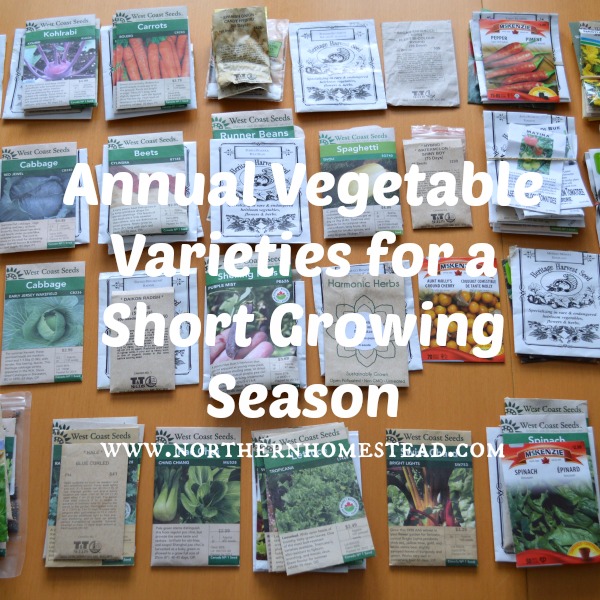
Annual vegetable varieties for a short growing season have to be quick maturing. Growing a productive garden takes time. Seeds need to be planted, germinate, established, the plants have to mature and produce fruit. In most parts of the world, there is plenty of time for this. The garden is planted in spring, grows all summer long, and is harvested in the fall.
In short growing season areas you don’t have a spring, maybe not even a fall, so all you got is summer. Only 100 or less frost-free days are challenging. It requires a very organized gardener and plant varieties that grow and produce quickly.
According to Environment Canada officially we have 107 frost-free days. Here is a link for Canada and USA frost-free dates to find out what your area has.
Today I want to share some of these annual vegetable varieties that are suited for short growing seasons. We have grown most of them successfully in our garden.
This list is not exhaustive, there are many more plant varieties that are suited for a short growing season. We have tried quite a few and if we were to list them all here it would make a very long list. Also, if some plants did not do well, they did not make it into this list. I will add and remove varieties as we experiment more with them. I want this list to be up-to-date, with plant varieties that are worth growing.
Plant groups that we have an extra blog post, are linked in the name.
Beans
- Purple Peacock (60-70 days for snaps) Beautiful and delicious Pole Bean, does not do well during a cool summer.
- Yellow Bean Roma Gold (55 Days) Reliable early bush bean.
- Dragon Tongue Bean (60 Days) Very productive bush bean.
- Pole Beans Scarlet Runner (65 Days) Beautiful as a flower and edible at any stage, a favorite.
- Black Turtle dry Beans (85 Days) A dry bean that matures in our short season.
- Tiger’s Eye Bean (95 Days) Very yummy dry bean that does mature in our short season.
Beets
- Cylindra (50-70 Days) Got it’s name from the cylindrical shape, sweet and good, a favorite.
- Bull’s Blood (58 Days) Pretty edible leaves.
- Beet Chioggia (58 Days) Striped beet that is better digestible than other beets I find, a favorite.
Broccoli
- Calabrese (60 Days) A classic.
- Rapini Sorento (35 Days) Early, can be grown indoors in the winter.
- Gai Lan (50-60 days) WE grow it indoors all winter. Several harvests from one plant.
Cabbage
- Early Jersey Wakefield (63 Days) Early, start early too.
- Early Copenhagen Market (65 days) a classic.
- Red Jewel (80-90 Days) Great middle-sized red cabbage.
Cauliflower
- Early Snowball (50 Days) Early classic.
Carrots
- Scarlet Nantes (65 Days) A must-have favorite.
- Red Core Chantenay (65 Days) Huge, great for preserving.
Cucumber
- Straight 8 (60 Days) A classic.
- Patio Snacker (50-60 Days) Great for small space, a favorite.
- Lemon cucumber (65 Days) So yummy pickled.
- Cucumber Holland Greenhouse (64 Days) For indoor growing.
Ground Cherry
- Aunt Molly’s (70 days) Great producer and keeper.
- Cape Gooseberry (80 Days) Very productive massive plants.
Eggplant
- Eggplant Fairy Tale (49 Days) Productive.
Kale
- Blue Curled (65 Days) Great for kale chips.
- Lacinato (65 Days) Huge plant.
- Winter Red (50 Days) A favorite, we grow it indoors all winter.
Kohlrabi
- Purple Vienna (55 Days) Beautiful
- Kongo (50 Days) Easy to grow and tasty
Lettuce
- Black-Seeded Simpson Lettuce (45 days) A classic.
- Red Sails (66 Days) Great looking and grows well.
- Tropicana (55 Days) A favorite.
- Butterhead Lettuce Esmeralda (53 Days) Grows well indoors.
- Italian Romaine (65 Days) Great for indoor hydroponics growing, a favorite.
Onion
- Spanish Candy (85 Days) Great yellow onion, stores well.
- Greek Salad (105 Days) Good red onion.
Peas
- Peas Homesteader (65 Days) A classic.
- Tom Thumb (50 Days) Very early.
Peppers
- Early Jalapeno (70 days) Productive.
- Doe Hill (60-65) Very tasty and beautiful yellow tomato pepper.
- King of the North (70 Days) A pepper that actually matures in short season.
- Supper Chili (65 Days) Hot, productive.
- Orange Bell (85 Days) Tasty.
Radish
- Radishes French Breakfast (25 Days) A classic.
- Daikon (55 Days)
Spinach
- Bloomsdale (50 Days) A classic and a favorite.
- Vancouver (50 Days) Good.
Swiss Chard
- Bright Lights (40 Days) Beautiful.
Squash
- Spaghetti Tivoli (74 Days) A small plant, very productive, early, tasty.
- Burgess Buttercup (85 Days) Great all around.
- Courgette Cocozelle (45 Days) Looks like zucchini, very productive and delicious, a favorite.
Zucchini
- Zucchini Dark Star (50 Days) A great keeper.
- Costata Romanesco (52 Days) Very tasty, a favorite
Tomatoes
- We have grown many tomato varieties, you will find them all in an extra post: Tomato varieties we grow.
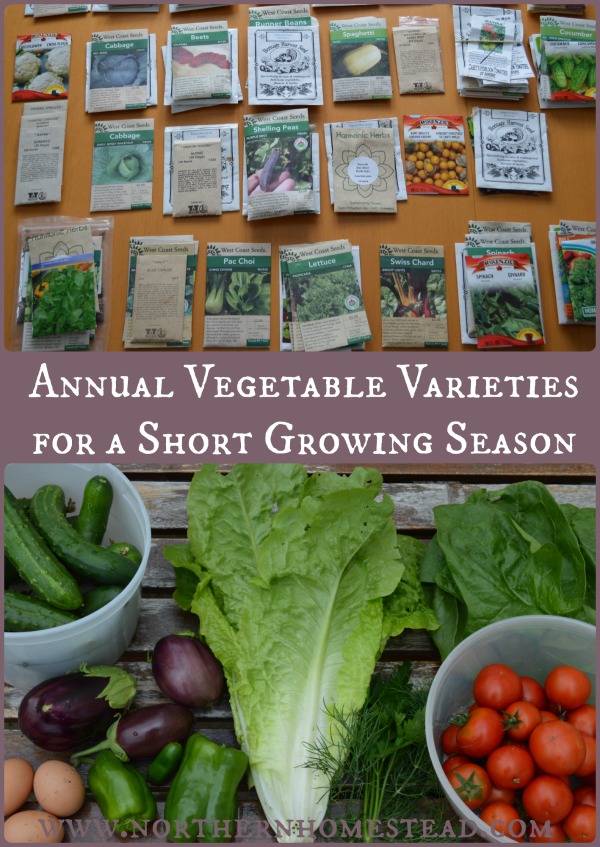
If you have short-season vegetable favorites that we have not mentioned, feel free to add them in the comments!
We invite you to subscribe to Northern Homestead and follow us on Instagram, Facebook or Pinterest for the latest updates.

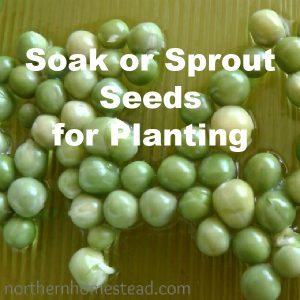
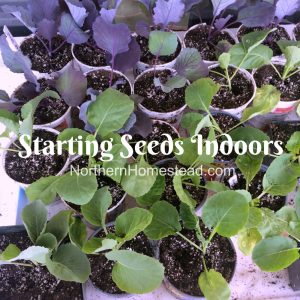

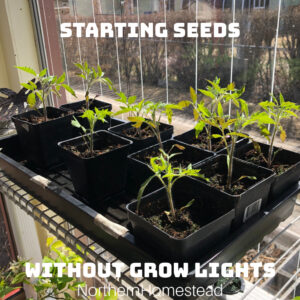
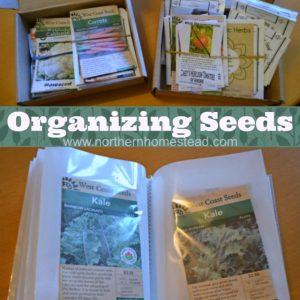

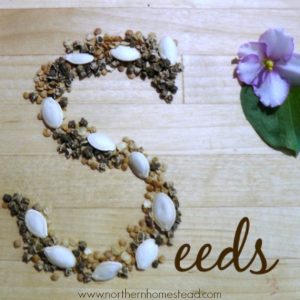
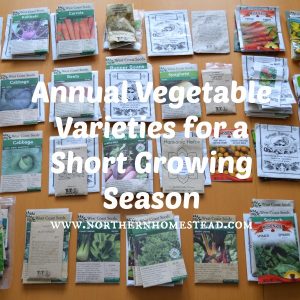
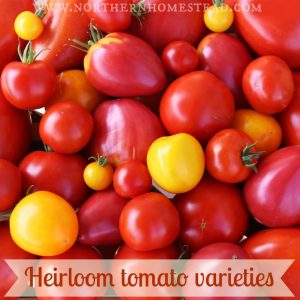

Thanks for a great list!
I’m always looking for vegetables with a short growing season. I think we have around 100 frost free days, perhaps a little less. Funny to see that some of the varieties are the same even half across the world. I’m going to have a hard time to fit everything in my growing beds, I’ll have to expand the vegetable garden a bit.
I ques if a variety is really good and proven to grow well it becomes popular around the world. I hear you on needing more space. It’s a constant battle here, too. There are so many good things to grow!
Thank you for sharing your list. Mine is very much the same except I haven’t been successful at cucumbers except for the round “lemon cucumbers”, only cherry tomatoes and that is still pretty poor, no peppers, no eggplant, no melons. I’m thinking I’m just not getting enough heat and that might require me to go with a black plastic ground cover so many are using these days. I’ve never tried Ground Cherry but I’m going to give it a try this year. I got 3 snows this month and a pretty good long freeze, looks like there’s some losses in pots, think I lost my baby fig tree.
Sorry to hear about your fig tree. Growing heat loving plants in cool climate is challenging. Use micro climates, windbreaker and thermal muss. Here is a good read for you: http://northernhomestead.com/micro-climates-in-a-northern-garden/.
I did read your article before but it’s always good to reread. Dealing with a small(er) yard, it’s challenging, but when that cold comes down the Frazier River from Alaska….somethings gonna die! I stuffed all I could into my garden room and there’s no more room and I looked at the little fig and hoed & hummed about dragging it to another area but because it was in such a huge black garden pot (10 gallon) I thought it might make it and I wouldn’t have to move it. My plan was to keep it contained and dwarfed. It didn’t cost me anything because it was a sucker of my neighbor’s big fig tree….and they are gone until April 3rd! ……think I’ll mosey on over and see if I can find another sucker!
I’m planning a garden at 8,000 ft elevation in Manitou Springs, Colorado. Up against Pikes Peak. Any help/encouragement would be helpful. Thank you very much. Also, I’m exploring straw bale gardening because of heat generated at the roots.
Congrats on your garden plan. There is lots of info on this blog about cold climate gardening. If you are new to gardening I would recommend starting small. You can always grow as you go. Happy gardening!
Hi Tommy,
I am gardening at 8200′ in South Fork. I recommend using raised beds, canvas grow bags, and lots of mulch. I’ve had a tough time with my seeds getting eaten by birds and ground critters, so the grow bags are good. They also allow you to drag the plants to shelter if there will be a frost. If you are using grow bags, I recommend you use a good soil amended with Azomite minerals each year. I’ve noticed the minerals really enhance the taste of the veggies. I have a design for a curved straw bale structure that enabled me to get ripe tomatoes and corn at 8400’…I call it a “Suncup”. I used natural light pink volcanic ash stucco on the inside of the bales…it reflected heat and light back onto the plants and I was able to protect from deer by putting T stakes and chicken wire up on the sunny side.
Right below you in Eureka Montana. I have enjoyed your blog. I need help for the shorter, dryer and colder seasons as we moved from western Washington. I am sure that what you say will be a great help in our growing future!
Short, dry and cold sounds very much like our climate. There is lots of information on here, just keep reading and learning.
You gave me some good information that I will use in the spring. I have a very short season living at 8,500 ft. in the Colorado rocky mountains. Had to do three plantings this year so I am building a greenhouse to start my plants in until June comes next year. Have a good garden with lettuce, tomatoes, peppers, onions, peas, beans, zucchini, squash, strawberries, blackberries and two apple trees. Thanks for the help. It’s hard to find short season growing information and almost impossible to get high altitude growing help so I just sort of take it as it comes.
Having only about 60 frost-free days, I grow in a couple of greenhouses. But since they are not heated, plants such as tomatoes, peppers, cucumbers and gourds cannot take the cold nights very well – temperature can drop inside to 2C even in the warmest part of the summer.
I have had the greatest success with oriental brassica (bok choi, napa, gai lan, etc.), most short season brassica (my brussel sprouts never get to maturity – 🙁 ), potatoes, turnips (not rutabagas), snow peas, daikon, and, of course, all leafy greens.
I start many of the plants inside two months before transplant, but I find turnips to be excellent for direct planting.
Thanks for the list, I will look some of them up for trial this summer!
That is extreme weather to grow in that you are dealing with. Have you seen our car radiator post? https://northernhomestead.com/car-radiator-for-heating-and-cooling-a-greenhouse/ That maybe could help you to raise the night temperature in your greenhouse with minimal cost.
Wow, I can’t believe the high elevations some of you are growing in! Amazing that anything flourishes in such extreme weather. My hat’s off to you guys. I thought it challenging enough at 3300 ft elevation zone 7a with late freezes into June sometimes killing early fruit tree buds. The fig should have survived if it was dormant. Maybe it didn’t have a good root system? Thanks for the nice list Anna.
One of my favorites is “Toy choy”…it’s a 6” bok choy that is open-pollinated and ready to eat in about 30 days. I’ve noticed that it doesn’t have a realy hig germination rate on the seeds I’ve collected, so I usually start several in the germination pots. These plants make a beautiful dark yellow flower head that draws all kinds of pollinators into the garden. Unfortunately, I haven’t grown enough of them because they get eaten instead of allowing them to go full term.